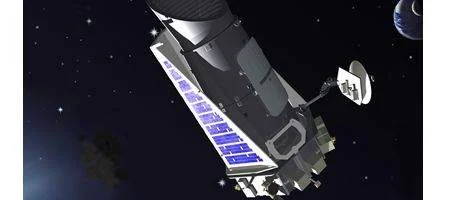Two teams of astronomers using NASA’s Kepler space telescope have discovered 41 new transiting planets in 20 star systems. They up the total number by more than 50 percent, to 116 planets in 67 systems.

Nineteen of these latest planetary systems have two, closely spaced, transiting planets and one has three. They range from Earth-size to more than seven times the radius of Earth, but are too close to their parent stars to be habitable.
The planets were confirmed by analyzing Transit Timing Variations (TTVs). In closely-packed systems, the gravitational pull of the planets causes the acceleration or deceleration of a planet along its orbit. These tugs cause the orbital period of each planet to change from one orbit to the next.
“These systems, with their large gravitational interactions, give us important clues about how planetary systems form and evolve,” says Jason Steffen of the Fermilab Center for Particle Astrophysics in Batavia, Illinois.
“This information helps us understand how our own solar system fits into the population of all planetary systems.”
The two research teams used data from NASA’s Kepler space telescope, which measures dips in the brightness of more than 150,000 stars, to search for transiting planets.
Natalie Batalha, Kepler mission scientist at NASA’s Ames Research Center, says the TTV technique could ease the bottleneck that currently exists between identifying a possible exoplanet and confirming it.
“The sheer volume of planet candidates being identified by Kepler is inspiring teams to look at the planet confirmation and characterization process differently,” she says.
“This TTV confirmation technique can be applied to large numbers of systems relatively quickly and with little or no follow-up observations from the ground.”






